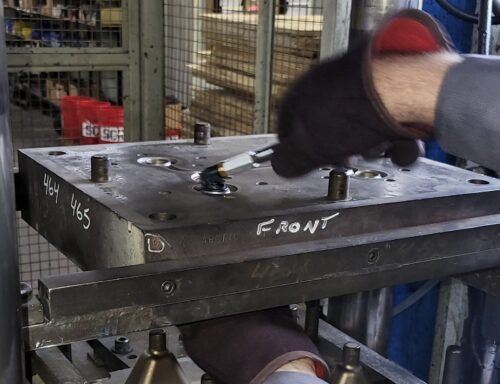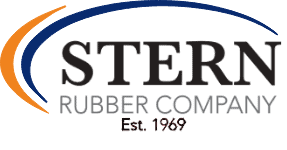Stern Rubber Company’s expertise in injection molding goes back as far as the process itself. Injection molding of rubber has its roots in the molding of plastics. In the 1960’s, engineers developed a way to use the same principles in molding plastics to mold rubber, making rubber injection molding one of the most efficient rubber manufacturing processes. The rubber injection molding process works significantly heating the rubber and using a very high pressure to inject the rubber compound into the mold.
Rubber Injection Molding Process
Injection molding rubber is quite similar to molding other materials but typically requires higher pressures. Steps in the process include the following:
Mold Design and Preparation
Planning a rubber injection molding project requires the same design and material considerations as any injection molding process. Molds must allow liquid rubber to rapidly and completely fill the cavity, cool effectively, and be fully ejected without damage. Designs that avoid thin walls and geometries that make ejection difficult are typically more successful. Molds or dies are fabricated to produce each unique design. Proper mold maintenance is essential to ensure consistent production quality, as it helps prevent defects, optimize fill, cooling, and ejection processes, and extends the lifespan of molds used in rubber injection molding projects.
Material Preparation and Injection
Rubber formulations should be chosen to meet the specific part requirements. Some rubbers commonly used include:
- Butyl Rubber
- EPDM
- Hydrogenated NBR
- Natural rubber
- Neoprene
- Nitrile (Buna-N or NBR)
- Styrene-Butadiene Rubber (SBR)
A compound of rubber and additives to meet functional or appearance requirements is preheated and thoroughly mixed to achieve a consistent blend. A release agent is applied to the mold, and the mold plates close tightly to prevent leakage (flash). A precise amount of this liquid rubber compound is forced at high pressure and temperature into the mold.
Cooling, Demolding, and Finishing
Combined heat and pressure generate changes in the rubber as it fills the mold cavity. Rapid cooling is typically achieved with cold water channels around the mold. When a part is adequately cooled, it is released or pushed out by ejector pins and the cycle begins again.
Even with an ideal mold design and effective release agents, injection-molded rubber parts may still require finishing steps such as trimming, deflashing, and deburring. Finally, parts are inspected to ensure they meet internal and customer quality standards and requirements.
Benefits of Rubber Injection Molding

Rubber is a tough, resilient material that performs well in a wide range of temperatures and challenging applications. With injection molding, durable rubber parts with customized shapes and details can be manufactured to tight tolerances at affordable prices. The benefits of rubber injection molding include the following:
Precision and Consistency
Molds for injection molding allow manufacturers to maintain consistency and precision over even very extended production runs, even with tight tolerances, intricate details, and complex geometries. The accurate nature of injection molding also produces minimal waste which can often be reused.
Efficiency and Cost-Effectiveness
With minimal waste, automated processes, and rapid cycle times, injection molding allows vast numbers of identical parts to be produced quickly. Longer production runs improve efficiency, further reducing costs per part. Injection molding is one of the fastest, most affordable methods of generating large volumes of identical parts in short timeframes.
Design Flexibility and Customization
Injection molding mold designs for rubber can be as intricate and complex as those for molding thermoplastics and other polymers. Inserts, overmolding, and multiple materials are all easily achieved with consistent, quality results. Molds, rubber formulations, and molding processes can all be fully customized to accommodate any customer requirements.
Rubber Injection Molding by Stern Rubber
At Stern Rubber, our injection molding services are one of the most cost-effective solutions we offer for the rapid production of high volumes of identical, precise parts and components. Serving industries as varied as agriculture, mining, manufacturing, and water supply and delivery, our team has decades of experience in all kinds of rubber manufacturing. Contact us to learn more about how our full capabilities can satisfy your next project.
